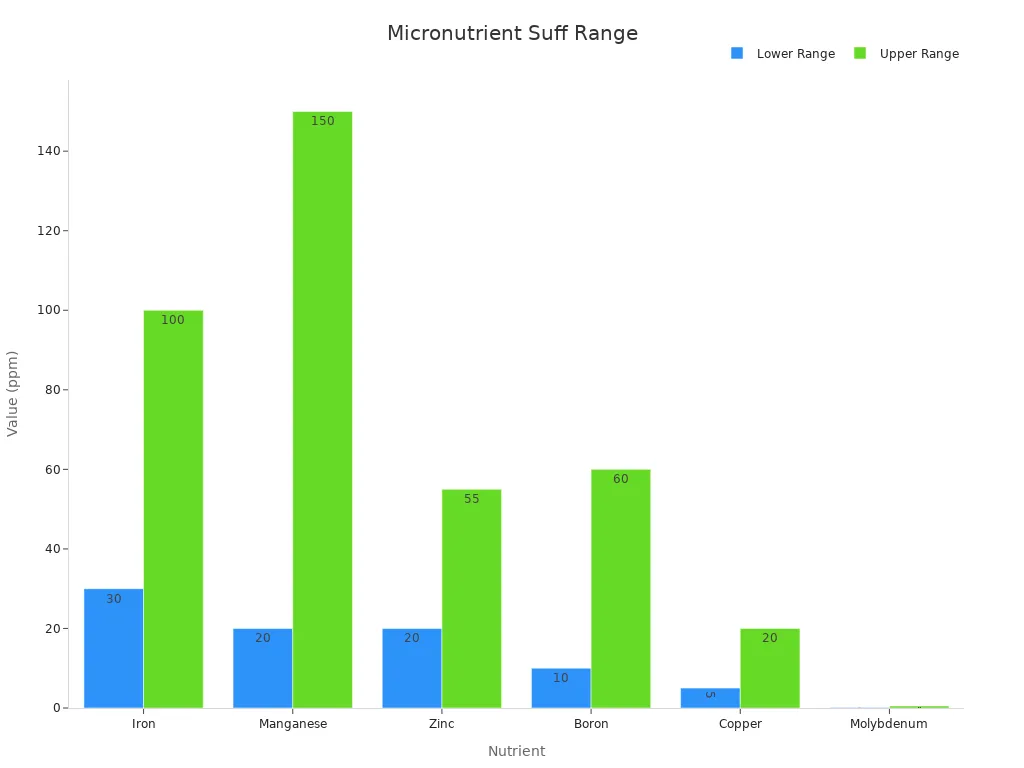
Essential Guide to Golf Fertilizer for Healthy Turf Management
Share
Maintaining healthy turf on a golf course requires careful nutrient management. You need to ensure the grass receives the right balance of nutrients to stay resilient and visually appealing. Studies show that proper nutrient management can reduce fertilizer use by up to 90% when paired with conservation practices like soil testing and precision application. Between 2006 and 2014, U.S. golf courses significantly reduced nitrogen, phosphate, and potash use, highlighting the role of efficient practices. Golf fertilizer plays a key role in this process, providing essential nutrients that enhance turf health and improve playability.
Teego AI Golf Tee Time Bot
The only 24/7 automated tee time booking system that directly integrates with GolfNow, guaranteeing zero missed bookings.
Get A Quote NowKey Takeaways
- Using nutrients wisely can cut fertilizer use by 90%. Test soil and apply carefully for best results.
- Nitrogen, phosphorus, and potassium are key for strong grass. Keep them balanced to help grass grow and stay tough.
- Testing soil often helps you use the right amount of fertilizer. This stops waste and keeps nature safe.
- Pick slow-release fertilizers to avoid losing nutrients. They feed grass slowly and keep it healthy.
- Try eco-friendly methods like leaving grass clippings on the lawn. This reuses nutrients and lowers the need for extra fertilizer.
Essential Nutrients for Turfgrass

Macronutrients
Nitrogen: Growth and color enhancement
Nitrogen is one of the most critical nutrients for turfgrass. It promotes high shoot density, vibrant green color, and overall growth. Without sufficient nitrogen, you may notice yellowing leaves and poor turf vigor. This nutrient also plays a key role in chlorophyll production, which is essential for photosynthesis. Golf fertilizer often contains nitrogen to ensure your turf maintains its lush appearance and resilience.
Phosphorus: Root development and establishment
Phosphorus supports root growth and is especially important for establishing new turfgrass. It strengthens roots, improves winter hardiness, and ensures the turf can absorb other nutrients effectively. A deficiency in phosphorus can lead to weak roots and slow establishment, making it harder for your turf to recover from stress.
Potassium: Stress tolerance and overall health
Potassium enhances your turf’s ability to withstand stress from drought, disease, and heavy foot traffic. It also improves wear tolerance and nutrient uptake efficiency. Turfgrass with adequate potassium levels exhibits better overall health and resilience.
|
Macronutrient |
Role in Turfgrass Growth and Development |
Consequences of Deficiency |
|---|---|---|
|
Nitrogen (N) |
Promotes overall growth and greenness |
Poor growth, yellowing |
|
Phosphorus (P) |
Essential for root establishment |
Weak roots, slow growth |
|
Potassium (K) |
Improves stress tolerance and health |
Increased susceptibility |
Micronutrients
Iron: Chlorophyll production and greening
Iron is vital for chlorophyll production, which gives turfgrass its green color. Even in small amounts, iron can significantly enhance the visual appeal of your golf course. A deficiency may result in pale or yellowish grass, reducing the overall aesthetic.
Zinc and Manganese: Supporting metabolic functions
Zinc and manganese are essential for various metabolic processes in turfgrass. Zinc aids in enzyme activation, while manganese supports photosynthesis and nitrogen metabolism. Maintaining adequate levels of these micronutrients ensures your turf remains healthy and functional.
|
Nutrient |
Symbol |
Sufficiency range (ppm) |
|---|---|---|
|
Iron |
Fe |
30-100 |
|
Manganese |
Mn |
20-150 |
|
Zinc |
Zn |
20-55 |

Balanced Nutrition
Importance of maintaining proper nutrient ratios
Balanced nutrition is essential for healthy turfgrass. Nitrogen, phosphorus, and potassium must be applied in the correct ratios to meet the specific needs of your turf. For example, nitrogen supports shoot density and color, phosphorus aids in root development, and potassium enhances stress tolerance. Imbalances can lead to nutrient deficiencies or excesses, which harm turf health. Using golf fertilizer with the right nutrient balance ensures your turf thrives year-round.
|
Nutrient |
Importance |
Effects |
|---|---|---|
|
Nitrogen |
Needed for growth and recovery |
Enhances color, density, and vigor |
|
Phosphorus |
Critical for establishment |
Improves rooting and winter hardiness |
|
Potassium |
Improves overall health and stress tolerance |
Enhances wear tolerance and nutrient uptake |
Tip: Regular soil and tissue testing can help you determine the exact nutrient ratios your turf needs for optimal health.
Soil and Tissue Testing
Why Testing is Crucial
Tailoring fertilizer applications to specific needs
Soil and tissue testing ensures your turf receives the precise nutrients it needs. Without testing, you risk over-fertilizing or under-fertilizing, which can harm turf health and waste resources. Regular testing monitors nutrient levels, especially in sandy soils where nutrients can deplete quickly. It also identifies imbalances in soil chemistry, allowing you to address deficiencies effectively.
|
Evidence |
Explanation |
|---|---|
|
Regular testing helps maintain the necessary nutrient levels for healthy turf growth, especially in sandy soils where levels can change rapidly. |
|
|
Nutrient imbalances can occur |
Variability in soil chemistry can lead to nutrient imbalances, necessitating plant analysis to verify deficiencies. |
|
Environmental impact of excess fertilizer |
Over-fertilization not only wastes resources but also harms the environment; testing helps apply only what is needed. |
Testing also supports environmental sustainability. By applying only the required nutrients, you reduce the risk of runoff and protect nearby water sources. This practice not only benefits the environment but also enhances the playability and appearance of your golf course.
Conducting Soil Tests
Steps for collecting and preparing soil samples
Accurate soil testing begins with proper sample collection. Follow these steps to ensure reliable results:
- Collect 12 or more subsamples from the area in a grid pattern.
- Sample soil at a depth of 3 to 4 inches, removing any thatch.
- Mix the subsamples thoroughly in a clean bucket to create a composite sample.
- Take about 1/3 pint of the mixed sample and place it in a soil testing kit.
- Avoid contamination with lime or fertilizer during the process.
These steps ensure the sample represents the area accurately. Consistency in sampling depth and technique is key to obtaining meaningful results.
Interpreting Results
Identifying deficiencies and adjusting applications
Once you receive the test results, you can identify nutrient deficiencies and adjust your fertilizer applications accordingly. Soil test categories, such as "Very Low" or "Optimum," guide you in determining the appropriate nutrient levels for your turf.
|
Interpretation |
|
|---|---|
|
Very Low |
Significant deficiency; requires substantial nutrient additions. |
|
Low |
Moderate deficiency; nutrient additions are needed. |
|
Optimum |
Low probability of response to added nutrients; ideal range. |
|
Above Optimum |
Adequate levels; additional applications not recommended. |
|
Excessive |
Risk of environmental harm; no further applications should be made. |
By understanding these categories, you can avoid over-fertilization and focus on maintaining balanced nutrient levels. This approach not only improves turf health but also minimizes environmental risks. Regular testing and adjustments ensure your golf course turf remains vibrant and resilient year-round.
Types of Golf Fertilizer and Their Applications

Quick-Release Fertilizers
Immediate nutrient availability and best use cases
Quick-release fertilizers, such as ammonium sulfate and urea, dissolve rapidly in water. This makes their nutrients immediately available to your turfgrass. These fertilizers are ideal when you need to address nutrient deficiencies quickly or promote rapid growth. For example, ammonium converts to nitrate in the soil within days, ensuring your turf absorbs nutrients efficiently.
However, quick-release fertilizers come with risks. They can leach into groundwater if applied in excess or during heavy rainfall. This makes them less environmentally friendly compared to other options. Despite these drawbacks, their affordability and immediate results make them a popular choice for short-term turf improvement.
Tip: Use quick-release fertilizers sparingly and monitor weather conditions to minimize nutrient loss.
Slow-Release Fertilizers
Long-term nutrient supply and reduced leaching
Slow-release fertilizers, also known as controlled-release fertilizers, provide a steady supply of nutrients over time. These fertilizers reduce the risk of nutrient leaching and foliage burn, making them safer for your turf. Granular forms are particularly effective for long-term maintenance, while liquid options work well for consistent nutrient delivery.
In 2014, two-thirds of nitrogen applied on golf courses came from slow-release fertilizers. Their convenience and environmental benefits have made them a preferred choice for many turf managers. However, their higher cost and reduced efficiency in the first year can limit their adoption. Studies show that proper management of slow-release fertilizers can significantly reduce nitrogen runoff, protecting nearby water sources.
|
Advantages |
Disadvantages |
|---|---|
|
Reduced leaching risk |
Higher initial cost |
|
Consistent nutrient supply |
Slower initial efficiency |
|
Lower burn potential |
Requires precise application |
Organic vs. Synthetic Fertilizers
Benefits and limitations of each type
Organic fertilizers, derived from natural sources like compost or manure, improve soil health by enhancing microbial activity. They release nutrients slowly, reducing the risk of leaching. A study conducted from 2019 to 2021 found that organic fertilizers improved turf quality over time, making them a sustainable option for golf courses. However, they often require larger application rates and may not provide immediate results.
Synthetic fertilizers, on the other hand, deliver nutrients in precise amounts. They are highly effective for rapid turf growth and recovery. While they offer convenience, their overuse can harm the environment by contributing to nutrient runoff. Balancing the use of organic and synthetic fertilizers can help you achieve optimal turf health while minimizing environmental impact.
Note: Consider your turf’s specific needs and environmental conditions when choosing between organic and synthetic fertilizers.
Developing a Nutrient Management Plan
Application Timing and Frequency
Seasonal fertilization strategies
Timing your fertilizer applications correctly ensures your turf receives nutrients when it needs them most. Cool-season grasses benefit from fertilization in the fall, between September and November. During this period, apply up to 75% of the total nitrogen for the year. Avoid excessive nitrogen applications from February to April, as this can lead to undesirable growth. For warm-season grasses, focus on spring and summer applications when the turf is actively growing.
|
Grass Type |
Best Application Time |
Notes |
|---|---|---|
|
Cool-Season Grasses |
September to November (Fall) |
Apply 75% of total nitrogen in fall; avoid excessive nitrogen from February to April. |
|
Warm-Season Grasses |
Spring after green up and summer |
Greatest uptake occurs in spring and summer; manage nitrogen levels carefully. |
Late-season fertilization is critical for promoting root growth and preparing turf for winter. However, avoid fertilizing dormant turf to prevent nutrient waste. Early spring applications can enhance growth and quality, especially when combined with weed control measures.
Tip: Always conduct soil testing before applying phosphorus-containing fertilizers to avoid over-application.
Environmental Considerations
Preventing runoff and protecting water quality
Protecting water quality starts with minimizing fertilizer runoff. Retain grass clippings on the turf to recycle nitrogen and phosphorus naturally. Properly calibrate your equipment to ensure accurate application rates. Improving soil infiltration also reduces runoff potential while enhancing nutrient uptake.
|
Best Management Practice |
Description |
|---|---|
|
Retain grass clippings |
Returning clippings retains nitrogen and phosphorus in the turf system, reducing the need for additional fertilizers. |
|
Proper calibration of equipment |
Ensures accurate application of fertilizers, minimizing runoff and waste. |
|
Manage soil conditions |
Improving soil infiltration reduces runoff potential and enhances nutrient uptake. |
A 2014 study found that two-thirds of nitrogen applied to turf came from slow-release formulations. These fertilizers reduce the risk of leaching into groundwater, making them an environmentally friendly choice.
Monitoring and Adjusting
Adapting to changing turf conditions
Regular monitoring helps you adjust your fertilization strategy to meet your turf’s changing needs. Soil testing remains the most reliable method for assessing nutrient levels. Visual observations, such as turf color and density, can also indicate deficiencies. Measuring clipping volume provides insights into growth rates and nutrient removal, helping you fine-tune your applications.
|
Metric/Trend |
Description |
|---|---|
|
Soil Testing |
Regular assessments to maintain nutrient levels and adjust fertilization based on nutrient decline. |
|
Visual Observations |
Daily turf quality ratings to identify trends and make informed management decisions. |
|
Clipping Volume Measurements |
Used to estimate growth rates and nutrient removal, helping to adjust fertilization accordingly. |
Long-term studies show that ongoing monitoring improves turf health and management efficiency. By aligning fertilizer applications with actual nutrient removal, you can optimize resource use and maintain vibrant turf.
Best Practices for Golf Fertilizer Use
Minimizing Nutrient Loss
Techniques to reduce leaching and volatilization
Reducing nutrient loss is essential for effective turf management. You can minimize leaching by avoiding overwatering, especially during summer when evapotranspiration rates are high. Using slow-release nitrogen fertilizers instead of water-soluble options also helps retain nutrients in the soil. Maintaining dense turfgrass further supports nutrient uptake and reduces runoff.
Incorporating fertilizers like urea into the soil immediately after application can cut nitrogen loss to the atmosphere by up to a third. Applying nitrogen fertilizers in bands rather than broadcasting them reduces ammonia volatilization. Urease inhibitors, when used with urea-based fertilizers, also prevent nitrogen loss.
|
Technique/Practice |
Description |
Impact on Nutrient Loss |
|---|---|---|
|
Immediate Incorporation |
Quickly incorporating urea fertilizers into the soil |
|
|
Banding Liquid UAN |
Applying nitrogen in bands instead of broadcasting |
Reduces ammonia volatilization significantly |
|
Urease Inhibitor Use |
Adding urease inhibitors to urea or UAN |
Minimizes volatilization loss of nitrogen |
Tip: Avoid fertilizing dormant turf to ensure nutrients are absorbed effectively.
Maximizing Nutrient Uptake
Role of aeration and soil health improvement
Improving soil health enhances nutrient uptake. Aeration reduces compaction, allowing roots to access water and nutrients more efficiently. Managing thatch layers prevents shallow rooting, which can limit nutrient absorption. Maintaining proper soil pH ensures nutrients remain available to the turf.
Adequate moisture is critical for nutrient release and mineralization. Promoting microbial activity in the soil also boosts fertility by recycling organic material. Correcting factors that reduce infiltration, such as poor drainage, improves nutrient efficiency and minimizes runoff.
|
Aeration Method / Soil Health Metric |
Description |
|---|---|
|
Manage soil compaction |
Enhances rooting activity and nutrient acquisition |
|
Manage excessive thatch |
Prevents shallow rooting and nutrient loss |
|
Ensure adequate moisture |
Supports nutrient release and mineralization |
|
Promote microbial activity |
Recycles nutrients through organic material decomposition |
Sustainable Practices
Environmentally friendly fertilization methods
Adopting sustainable practices ensures long-term turf health while protecting the environment. Fertilizing based on soil test results prevents over-application and reduces nutrient waste. Precision fertilizer application targets specific areas, minimizing runoff and maximizing effectiveness. Returning grass clippings to the turf recycles nutrients naturally, reducing the need for additional fertilizers.
|
Description |
|
|---|---|
|
Fertilizing based on soil test results |
Ensures nutrients are applied according to soil needs |
|
Precision fertilizer application |
Targets specific areas to minimize waste |
|
Returning clippings |
Recycles nutrients back into the soil |
Since 2006, conservation practices have significantly reduced nutrient use on golf courses. By combining these methods with slow-release fertilizers, you can maintain vibrant turf while minimizing environmental impact.
Using golf fertilizer is essential for maintaining healthy and resilient turfgrass. A balanced supply of nutrients like nitrogen, phosphorus, and potassium supports growth, stress tolerance, and root development. Soil testing ensures precise applications, while proper techniques minimize environmental impact. Integrated turf management practices further enhance turf health. By understanding nutrient needs, selecting the right fertilizers, and following best practices, you can achieve optimal results. Start implementing a tailored nutrient management plan today to keep your golf course vibrant and playable year-round.
FAQ
What is the best fertilizer ratio for golf course turf?
The ideal ratio depends on your turf's needs. A common starting point is a balanced mix like 3:1:2 (Nitrogen:Phosphorus:Potassium). Soil testing helps you determine the exact ratio for optimal growth and health.
How often should you fertilize golf course turf?
Fertilize based on the grass type and season. Cool-season grasses benefit from fall applications, while warm-season grasses thrive with spring and summer fertilization. Typically, apply fertilizer every 6-8 weeks during the growing season.
Can you mix organic and synthetic fertilizers?
Yes, combining organic and synthetic fertilizers can provide immediate and long-term benefits. Organic fertilizers improve soil health, while synthetic options deliver precise nutrients. Balance both types to meet your turf's specific requirements.
How do you prevent fertilizer runoff?
Prevent runoff by applying fertilizers during dry weather and avoiding overwatering. Use slow-release fertilizers to reduce leaching. Retain grass clippings on the turf to recycle nutrients naturally and improve soil infiltration.
Why is soil testing necessary before fertilizing?
Soil testing identifies nutrient deficiencies and ensures you apply the right fertilizer. It prevents over-fertilization, saving resources and protecting the environment. Regular testing helps maintain balanced nutrient levels for healthy turf growth.
Tip: Always follow the manufacturer's guidelines when applying fertilizers to avoid overuse and environmental harm.
